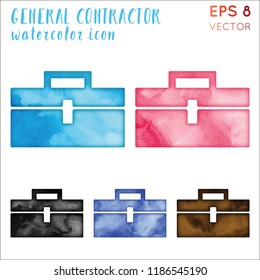Gain Understandings Into Just How Climate Condition Can Affect The Outcome Of Your Outside Painting Task, Making Certain A Professional Surface
Gain Understandings Into Just How Climate Condition Can Affect The Outcome Of Your Outside Painting Task, Making Certain A Professional Surface
Blog Article
Written By-Conradsen Dowling
Comprehending how weather can affect the end result of an outside paint venture is vital for achieving a remarkable finish. From temperature variations altering paint attachment to humidity levels impacting drying times, each component of weather plays a considerable function in the success of your job. Additionally, wind rate and precipitation can introduce unanticipated obstacles that may jeopardize the top quality of the result. As we navigate through the nuances of weather condition's effect on external painting, it comes to be evident that meticulous planning and strategic timing are crucial for guaranteeing an expert and durable result.
Ideal Temperature Level Range for Paint
When considering external painting projects, the optimal temperature array plays a vital function in attaining optimum results. Paint in the right temperature level conditions ensures that the paint adheres correctly to the surface area, dries out equally, and remedies efficiently. Usually, the suggested temperature level variety for exterior paint is in between 50 to 85 levels Fahrenheit.
Paint in temperatures listed below 50 degrees Fahrenheit can cause issues such as poor paint attachment, extended drying times, and a raised possibility of breaking or peeling off.
On the other hand, paint in temperatures over 85 degrees Fahrenheit can cause the paint to dry as well swiftly, causing blistering, bubbling, and an irregular coating.
To attain the very best results, it is essential to inspect the weather forecast before starting an external painting project. Preferably, objective to paint during light weather with moderate temperature levels and low humidity levels.
Effects of Moisture on Paint Drying
Moisture levels substantially affect the drying out procedure of paint put on exterior surfaces. https://rafaelcludl.newsbloger.com/34510569/highlighting-the-amazing-abilities-of-residence-painters-learn-how-they-can-transform-your-residence-right-into-a-stunning-work-of-art-that-leaves-a-long-lasting-perception can lengthen the drying time of paint, causing possible issues such as dripping, streaking, or perhaps the development of bubbles on the repainted surface area. Excess moisture in the air reduces the dissipation of water from the paint, impeding the healing procedure. This is especially troublesome for water-based paints, as they rely on evaporation for drying.
On the other hand, low moisture degrees can likewise affect paint drying out. Very completely dry conditions may trigger the paint to dry as well quickly, leading to poor bond and a rough surface. In such instances, adding a paint conditioner or spraying a great haze of water airborne can aid control moisture degrees and enhance the paint result.
To make certain ideal drying problems, it is advisable to repaint when the moisture degrees vary in between 40% and 50%.
Monitoring humidity degrees and taking suitable actions can help accomplish a smooth and durable paint finish on exterior surfaces.
Wind and Rainfall Considerations
Wind speed and rainfall are essential factors that significantly influence the success of an external painting task.
When it pertains to wind, both rate and direction are necessary factors to consider. High wind speeds can create paint to completely dry as well rapidly, leading to a subpar completed with potential issues like splitting or irregular appearance. Additionally, wind can carry particles that may stick to the wet paint, leading to flaws. As a result, painters need to aim to work on days with light to moderate winds for optimal painting problems.
On the other hand, rainfall, whether rain or snow, can be extremely destructive to the end result of an outside painting project. Moisture from precipitation can prevent paint adhesion, triggering peeling off and bubbling over time. It is vital to prevent paint during stormy or snowy weather to make sure the long life and quality of the paint work. Painters ought to additionally allow enough time for the surface to dry extensively after any kind of precipitation prior to commencing or returning to the paint process.
painting contractors near me , weather conditions play a considerable function in the result of an outside paint project. The ideal temperature variety, humidity levels, wind rate, and precipitation all add to the success or failure of the paint job.
It is vital to consider these elements and plan accordingly to make sure correct paint adhesion, drying out times, and overall top quality of the completed product.
